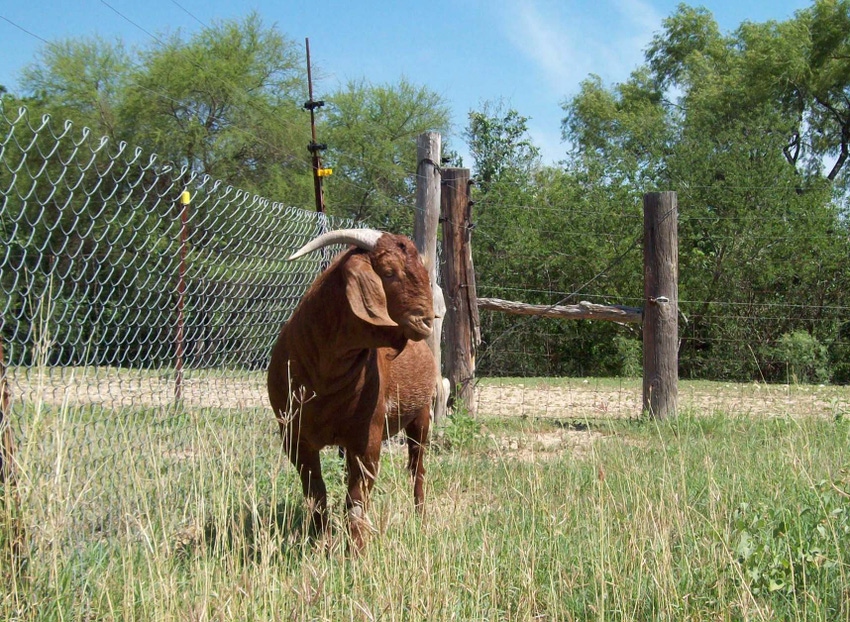December 1, 2011

The meat goat business has been one of the fastest growing agricultural sectors in the last ten to fifteen years. Unfortunately, there are many obstacles and road blocks in the way. But before spending thousands of dollars, consider several misconceptions and alternative solutions before investing.
Misconception # 1: It will be easy to make money.
Too many people spend too much money on pens, trailers, special feeds, and more, putting too much faith in the desired outcome of making it back. Few do. With current state of the economy, regardless of the quality of your animals, it will take much more effort and strategy to sell your goats while making a significant profit. Also, because the market goat industry has seen a drastic increase in new ranchers, as well as improved quality of the animals, marketing top quality goats becomes a challenge. Is it possible to make a profit or break even? You bet!
First, take an analytical look at what is possible and what is not. There is no need to buy the largest trailer, fanciest truck, or invest in expensive pipe fencing in the beginning. ROI should justify expenses. Focusing on the necessities—quality and not quantity—and keeping to a practical goal will keep your new business running for years. Don’t jump in planning to become instantly rich and ultimately regretting it in the end.
Misconception # 2: I can raise goats to market to multiple parts of the industry.
Currently, three loosely defined market areas exist—those who raise market goats specifically for meat purposes, those who raise breeding goats for the show and sell registered offspring to breeders, and those who have breeding goats and sell kids as wethers to 4-H/FFA exhibitors. Although the number one attribute is still meat, they all have different standards within the industry. In the meat goat market there is a demand for animals below 100 pounds and closer to 80. However, for 4-H and FFA shows we do selective breeding so wethers will gain at a rate that will exceed that 80-pound limit within a show season.
The market and meat goat shows lack uniformity. Within the breeding goat business we look for an animal that has width, depth, and overall body capacity able to carry the kids through the five- month gestation period and produce offspring with muscling. However, in the market goat show the judging trend is to pick narrower and smaller-framed animals. Considering these three sectors of the market goat industry, potential problems are more than evident. Can you do all three at the same time? Yes.
Consider if it is practical, easy to be successful, and feasible to make a profit while working in all three segments. No one answer fits all. But concentrating on one area will allow you to gain recognition of the group you are marketing to much quicker. This will allow you to understand the demand within a specific market, (longer bodied, stronger-topped wethers) and keep quality higher as you will be concentrating only on a specific kind of goat rather than different qualities for different markets.
Some ranchers are truly the "jack of all trades" and successful as such. They raise beef cattle, breeding stock, and even do eco-tourism, while still being successful at livestock shows. So, what is their secret?
Misconception # 3: Little investment is required
The first secret is assets. Many producers come from long-time ranching families. They have facilities already available to them and face no significant investment for facilities. Investment in animals would be next. However, when you compare that initial investment in stock to the expenses that will sustain your business over the long term—feed, medication, and time—the initial investment in animals may not be a deal breaker.
So what long term advantages do large ranchers have that others may not? Land. Not a big deal, perhaps, with good quality goats? Some may think they can feed hay and grain and still make a profit after sales. However, with the cost of square bales of Sudan going anywhere from $5.50 and up and feed costs increasing as well, the amount of available land for grazing and browsing becomes an important factor in overall sustainability. This is another obstacle to consider and work into a management plan.
Solution:
Concentrate money where it counts. When a breeder looks at your yearlings, will he care if you bought a new goose neck trailer, if you drive a new dually or an old beat up pickup, or if you have a hundred other goats in the back field that you’re feeding daily.
No. He looks at the yearling!
Invest in what you are selling, promoting, and what will enable you to show a positive ROI at the end of the year. There is nothing wrong with starting with two does and using an outside buck. Focus on quality rather than quantity.
Conclusion and Misconception # 4: It's not possible.
Answer: Yes it is!
The purpose here is not to dissuade you from entering into the goat business but to encourage you to educate yourself ahead of time to make clear, concise, and reasonable goals for your new venture. Most of all, determine what you can do and what you can't do. As with any investment, put in what you can afford to lose, work hard at making it a success, and enjoy yourself.
You May Also Like




